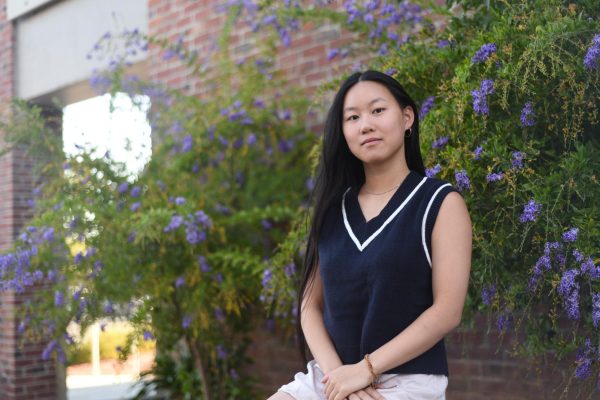FUHSD has delayed the implementation of Ethnic Studies as a mandatory course for freshmen from this school year to 2025-2026, which Superintendent Graham Clark says will allow FUHSD to gather more feedback on the course while still satisfying California’s educational requirements. Governor Gavin Newsom signed Assembly Bill 101 in October of 2021, making California the first state to require all students to complete a semester-long course in ethnic studies to earn a high school diploma, starting with the graduating class of 2030.
“Ethnic Studies is not only a history class, but it’s this large history that should be covered to understand the role of different groups of people of color in the United States,” said History teacher Usiel Meraz-Cerna, who is continuing to teach the course for its second year of pilot. “This helps us understand why we are where we are today.”
During each class, Meraz-Cerna asks students to reflect on their ethnic identities through activities such as writing and discussions, gradually expanding into experiences and communities they have less personal connections with. The curriculum development team chose the essential ideas covered in the course, led by FUHSD Social Studies Curriculum lead Viviana Torres from Fremont High School. However, Meraz-Cerna says each Ethnic Studies teacher follows their own curriculum.
While sophomore Ruhee Bhatnagar says the Ethnic Studies course piloted in 2023-2024 often felt comparable to a typical history class, she appreciated the unique opportunity to reflect on her own cultural identity. She says that she would enjoy learning about an even wider range of cultures and ethnic groups, as the course’s coverage of diverse ethnic groups gave her a better perspective on history, especially considering the diversity in the class.
“Since there are so many different types of people in the class, I feel like it’s easier for anyone to be able to relate and connect to the topics more easily,” Bhatnagar said. “Also, it’s always good to have perspectives from different types of people all across the world and different time periods too.”
Bhatnagar hopes that in the future, teachers can incorporate more discussion-based activities and fewer lectures into lesson plans, as she noticed that classmates stayed more engaged and took more opportunities to communicate their thoughts seriously during class discussions, compared to essays and other writing assignments.
Meraz-Cerna explains that Ethnic Studies at MVHS gives students many opportunities for reflection through introspective questions, which differs from a typical history class. The structure, which emphasizes students’ understanding of their personal identity, was intended to encourage students to think about the real world in Ethnic Studies.
“The curriculum came down to a natural progression of, ‘How do we get students to think about these larger issues of Ethnic Studies?’ So we work our way backward,” Meraz-Cerna said. “If we want students to think about issues of equality and fairness in society, then how do we get to that big picture? We have to start small with their immediate selves and then work our way through that.”
Principal Ben Clausnitzer says a class like Ethnic Studies is necessary for students to make important real-world connections with what they’re being taught in other classes. To Clausnitzer, learning the content in a setting that encourages students to formulate their own individual opinions allows students to interact in a mature and educated way.
“The idea is to try to present information in a way that is unbiased, allows for students to support it with their own experiences, access the curriculum and make sense of the information and how that might impact them and the world around them,” Clausnitzer said. “So I think using some resources like that and having conversations together collaboratively would be the ideal way to go.”
Even with the discussion-oriented nature of the course, parents across California are concerned about political bias in a course that involves interpreting history. But Meraz-Cerna strongly believes that completely removing bias is not only impractical but impossible, since bias is rooted in personal identity and the perspective of the matter.
“I think it’s a myth that anything or anyone can be unbiased because you can’t remove yourself from yourself,” Meraz-Cerna said. “I think the key is being able to identify bias and to understand how bias influences yours, mine or anyone’s understanding of the world around them. That allows you to step back from debating whether one thing is right or wrong to understanding the different perspectives.”




















